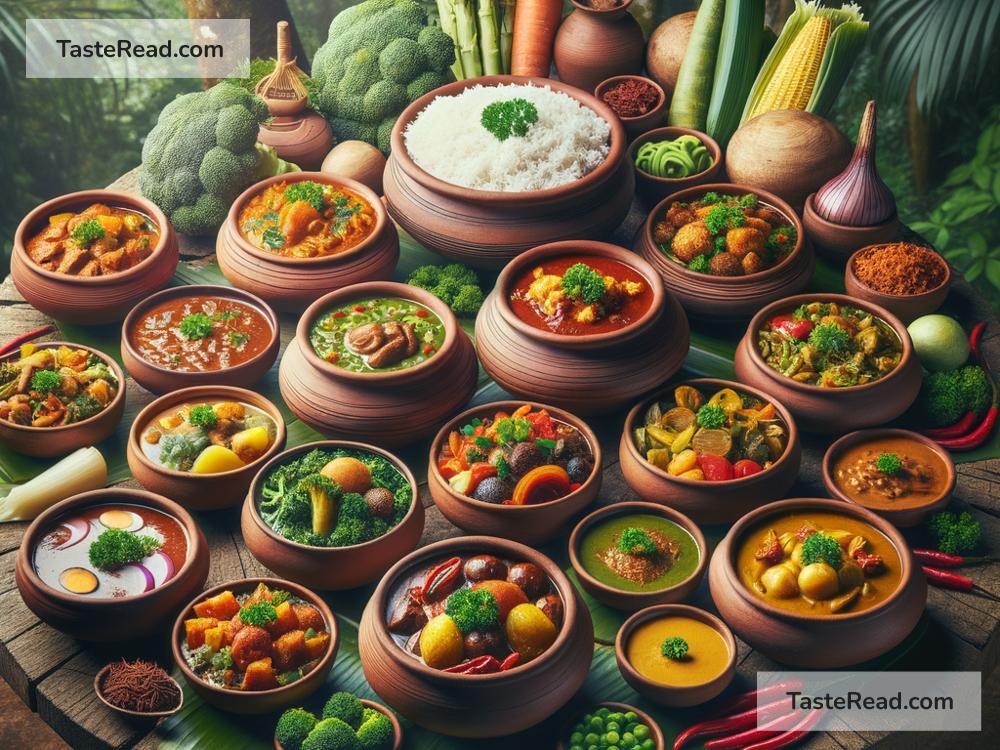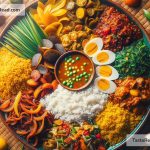How the Sri Lankan Rice and Curry Became a Cultural Staple
In the heart of Sri Lanka, an island nation known for its vibrant culture and breathtaking landscapes, lies a culinary marvel that has not only conquered local taste buds but also captivated hearts worldwide. This marvel is none other than the iconic Sri Lankan Rice and Curry. A dish so deeply intertwined with the country’s identity, it stands as a testament to a rich history, diverse cultures, and an undying love for flavors that harmoniously blend to create magic on a plate.
The journey of rice and curry in Sri Lanka is as old as time. Rice, being the central staple food, is thought to have been cultivated in the island’s luscious fields from as far back as 1000 B.C., making it a fundamental part of the local diet. The art of curries, meanwhile, reflects the island’s historical spice trade prominence, showcasing a variety of spices like cinnamon, cardamom, and turmeric, which are native to Sri Lanka and were once highly coveted by traders from around the globe.
What makes Sri Lankan Rice and Curry stand out is its complexity and variety. A typical meal involves a heaping serving of rice surrounded by various curries that feature an array of vegetables, meats, and fish. Each curry is unique, ranging from fiery hot to subtly flavored, thanks to the diverse spices used in Sri Lankan cooking. The addition of coconut milk in many curries adds a creamy texture and sweetness, balancing the heat and spice perfectly.
This culinary tradition is more than just a daily meal; it’s a communal experience deeply rooted in Sri Lankan culture. From humble rural kitchens to bustling city restaurants, the making and sharing of rice and curry symbolize hospitality and a warm welcome. In Sri Lankan households, it’s common practice to cook an assortment of curries, showcasing the family’s cooking skills and the richness of Sri Lankan cuisine. Sharing these meals during gatherings is a way of strengthening bonds and expressing love and respect among family and friends.
Another aspect that highlights the cultural significance of rice and curry in Sri Lanka is its presence in both everyday life and festive occasions. No matter the event, whether it’s a simple family dinner, a religious celebration, or a grand wedding feast, rice and curry take center stage, reflecting the versatility and adaptability of this beloved dish. Special variations of rice such as the fragrant yellow rice (Kaha Bath) and the celebratory milk rice (Kiribath) are prepared during significant events, each carrying its unique symbolism and importance in the country’s culinary tradition.
Moreover, the regional variations of rice and curry further exemplify the diversity within the country. Each region in Sri Lanka has its own version, influenced by local ingredients, climate, and historical interactions with foreign traders and colonizers. For instance, the Northern region, with its strong Tamil influences, showcases a distinct range of curries that differ in spice levels and ingredients from the coastal or central parts of the island. This diversity not only enriches the Sri Lankan culinary landscape but also tells a story of cultural exchange and adaptation over centuries.
As Sri Lanka opens to the world, the global appreciation for its rice and curry has grown exponentially. Travelers to the island are eager to taste the authentic flavors, while Sri Lankan expatriates carry this culinary tradition with them, sharing it with people across the globe. International chefs and food enthusiasts have also taken inspiration from this dish, creating fusion meals that blend Sri Lankan flavors with various culinary traditions.
In essence, the Sri Lankan Rice and Curry is more than just a meal; it’s a cultural staple that encapsulates the island’s history, diversity, and the warm hospitality of its people. It embodies a lifestyle that values sharing, celebration, and a deep connection with history through the language of food. As this delicious tradition continues to cross borders and touch hearts, it reminds us of the power of cuisine in bridging cultures and bringing people together, one flavorful spoonful at a time.


